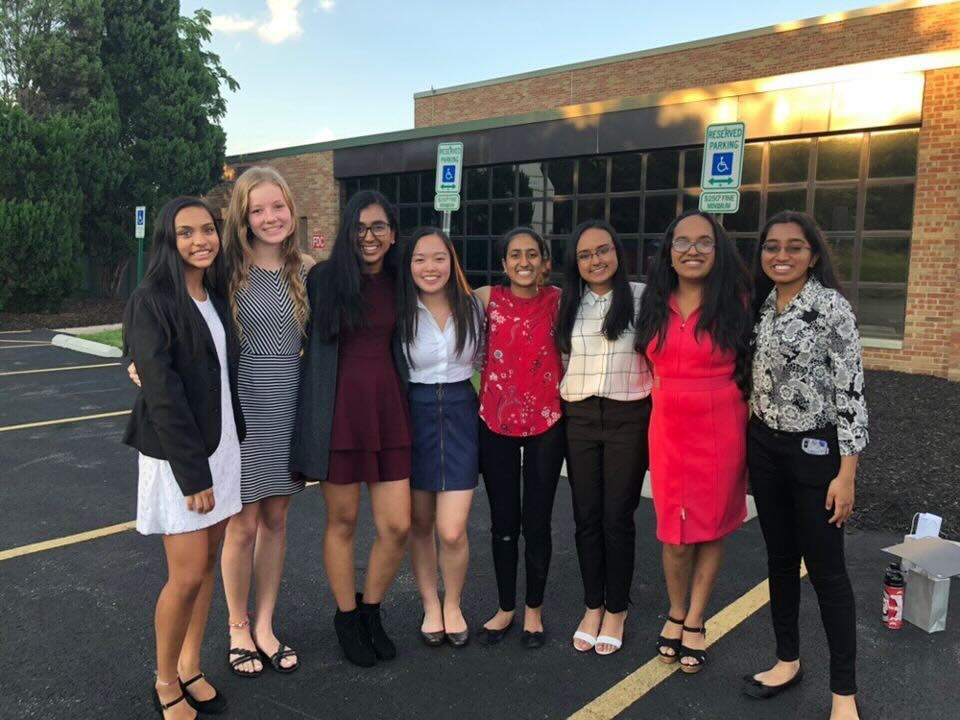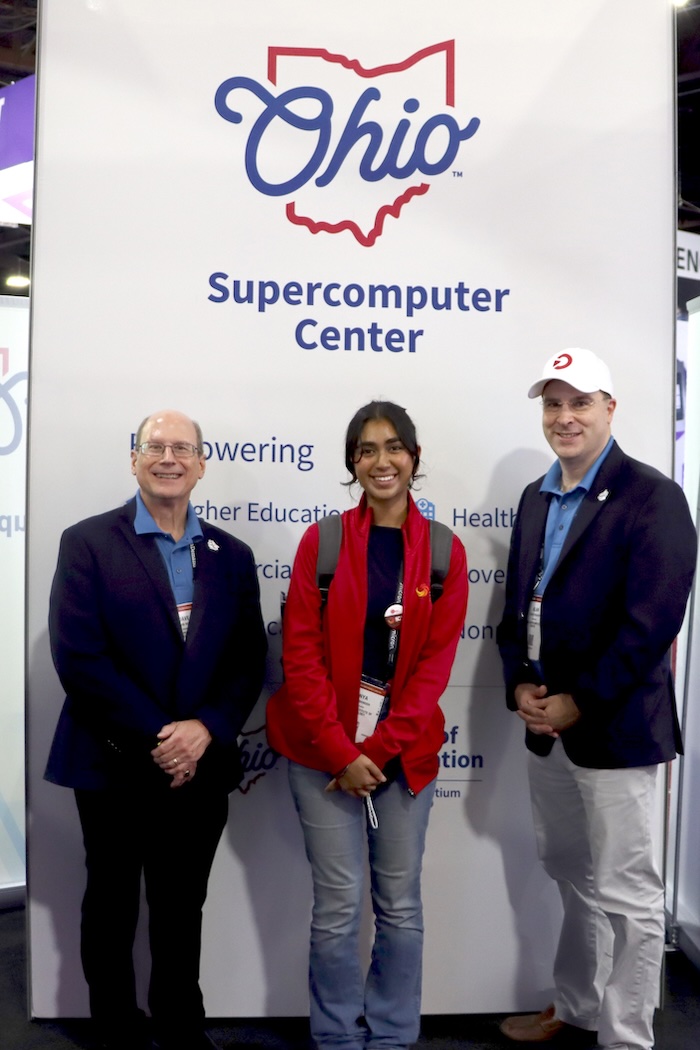Panya Bhinder’s love for science and technology began as a high school student at Columbus Academy, where physics and its processes captivated her. Like many high school students, she was unsure of how to translate her interests into a potential career. It wasn’t until a teacher recommended the Ohio Supercomputer Center’s STEM Institute, known then as the Summer Institute, that she found herself on a path she never anticipated.
“I always loved physics, but the program opened my eyes to something new,” Bhinder said. “I thought, maybe computational physics could be something I want to explore more.”
At the STEM Institute in June 2019, Bhinder’s perspective shifted as she encountered high performance computing (HPC) for the first time. A two-week summer program for high school students, the STEM Institute introduces participants to supercomputing through hands-on projects in science and engineering. Bhinder worked on the Dark Matter Project, where she and her peers measured the mass of dark matter in galaxies by analyzing images from telescopes.

“Through the program, I realized there was so much more to explore,” she explained. “Working alongside students with similar interests and collaborating on projects made the introduction to HPC even more impactful. That sense of community and teamwork stuck with me.”
That learning experience provided her with the tools and confidence necessary to make a decision about her future. What started as a curiosity about physics grew into an interest in computational tools, leading her to pursue a bachelor of science in computer science with a minor in physics from the Georgia Institute of Technology (Georgia Tech).
When Bhinder entered her second undergraduate year at Georgia Tech, she was looking for clubs to join and came across the campus Supercomputing @ GT group. The idea intrigued her, but she didn’t fully realize the relevance of her previous exposure to HPC until she joined.
“I remembered using a computing cluster back in high school at OSC,” she recalled. “It felt like I already had a head start because of that experience.”
As she advanced in her studies, HPC became an integral part of her academic journey. In her undergraduate physics classes, she used HPC to run astrophysics simulations, applying computational methods to study celestial phenomena.
Now pursuing a master's degree in computer science at Georgia Tech with a focus on HPC, she continues to use supercomputing in her coursework and research. Her current graduate research explores the energy efficiency of hardware accelerators on sparse matrix operations, an area crucial to optimizing computational performance.

In November 2024, she attended the Supercomputing Conference (SC) in Atlanta, where she had an unexpected and heartwarming encounter. While walking through the exhibition hall, she saw OSC’s booth and stopped to say hello. To her surprise, the team at OSC remembered her.
“It felt so good to be recognized by a place that had such a big impact on my journey,” she said.
Seeing alumna like Bhinder thriving in the HPC field is a reminder of the lasting influence of OSC’s educational programs.
“We love reconnecting with students who attended our summer programs and later pursued careers in HPC,” said Alan Chalker, OSC director of strategic programs. “Stories like Panya’s reinforce the value of these experiences—not just in introducing students to supercomputing but in setting them on paths they may never have considered.”
Now president of Supercomputing @ GT, Bhinder is committed to creating opportunities for others, especially undergraduate students, to discover the potential of HPC. Her mission is to foster a community where students can break into the field and thrive.
“My advice to anyone considering the STEM Institute is simple: Just do it,” she said. “HPC is versatile and there’s something in it for everyone—whether it’s physics, machine learning, architecture or hardware. You’ll meet incredible professionals and peers, and many will become lifelong connections.”
Written by Lexi Biasi
The Ohio Supercomputer Center (OSC) addresses the rising computational demands of academic and industrial research communities by providing a robust shared infrastructure and proven expertise in advanced modeling, simulation and analysis. OSC empowers scientists with the services essential to making extraordinary discoveries and innovations, partners with businesses and industry to leverage computational science as a competitive force in the global knowledge economy and leads efforts to equip the workforce with the key technology skills required for 21st century jobs.